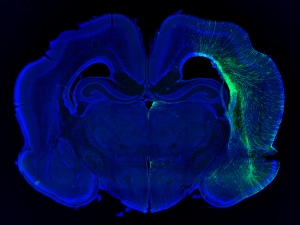Mervin, appreciated thoughts, as always.
But of course! That’s why I qualified with the word “necessarily”, of course! 
I’m really not sure if I’m talking past everyone here or not. I have tried to carefully qualify my statements such that this much is of course granted…
I grant of course that there is some lower limit of size, wherein any much smaller and the necessary neurons simply could not be dense enough to have the required number or complexity to achieve said intelligence. As an organism approaches that lower limit, there would presumably be a certain decline in intelligence, and the converse as well, as it grows past that threshold, there would presumably be a corresponding increase.
But all that would apply, and can in theory be examined in modern humans as well. there is a certainly some certain size that would preclude normal human intelligence in those with dwarfism. There is some limit where, if human population approached that small size, the population would decrease in intelligence, cognition, communication, etc., depending on the part(s) of the brain affected.
But conversely, there would come a point where raw size simply wouldn’t add anything more, once the necessary number and arrangement of neurons can exist and function. Hence why it doesn’t seem an issue that our brains seem to be slightly decreasing at present.
And it doesn’t seem difficult to recognize that at certain sizes that we can observe, perhaps around 3-8 ounces, a human brain seems quite able to function normally. Thus it seems that somewhere around that size, the arrangement and required number of neurons can (and do) exist within a brain of that size. Whatever the lower limit of size that would start to affect intelligence, it appears to be smaller than 8 ounces.
Thus my observation is that, given the fact of normal intelligence in very small human brains, then apparently, the needed neuron count and arrangement to achieve said intelligence, indisputably, can and does exist in brains of around 3-8 ounces.
Let me offer one more example… if I can trust National Geographic, the diminutive human species Homo floresiensis had a “chimp-sized brain.”
I simply suggest it would be unwarranted and premature to infer anything about the intelligence or lack thereof of these relatives of ours based on their brain size. According to what I’ve read regarding archaeology, they seem to have exhibited all the other traits of intelligence of other homo species at that time period. If we can observe modern diminutive humans of similar, or even smaller brains, that have normal human intelligence, I simply see no reason why we should use as a starting assumption that Homo floresiensis must have been of lesser intelligence than any other variety of homo due only to the fact they had brains a third the size of ours.
Is this really such an odd position?
